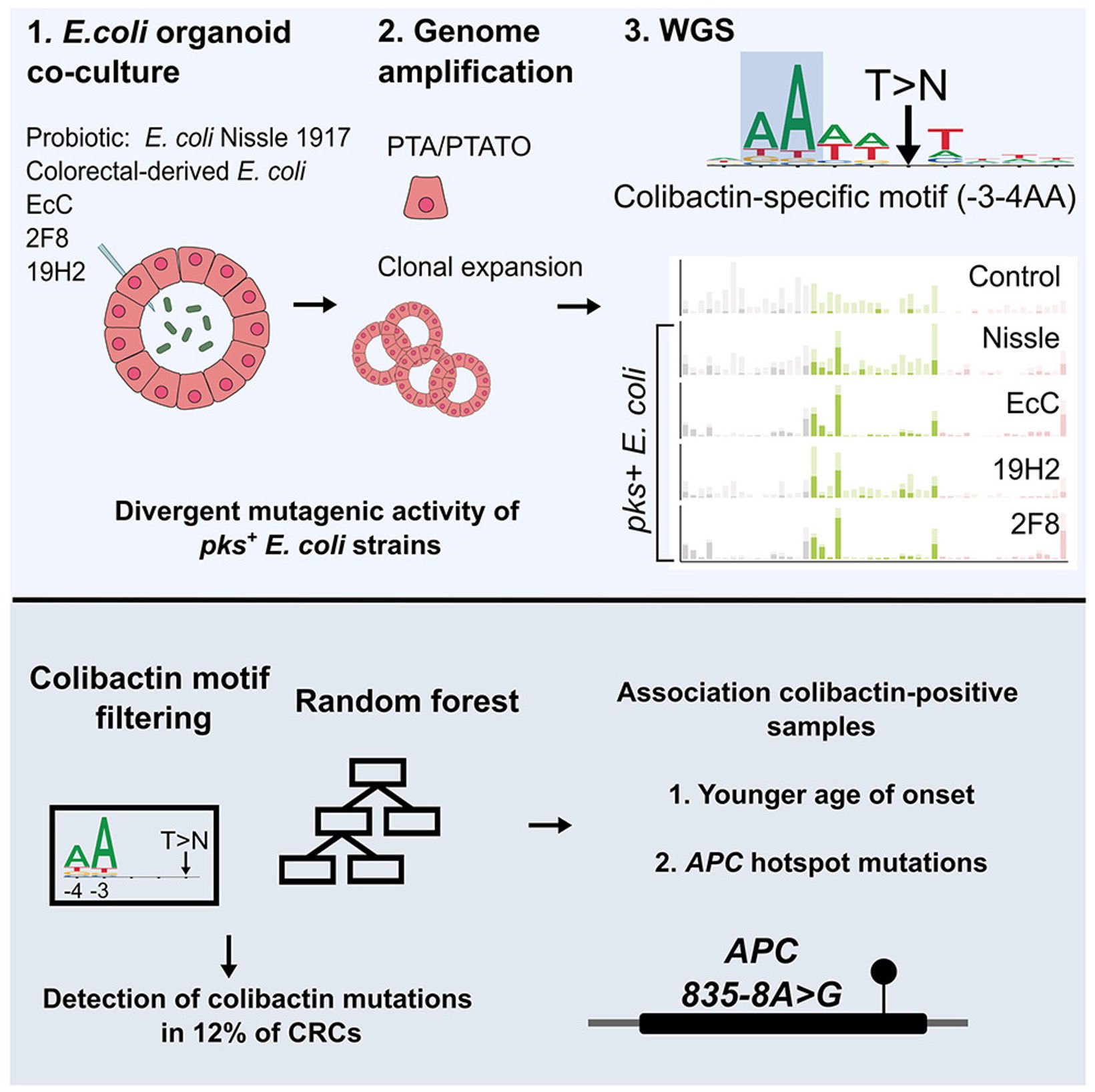Improved detection of colibactin-induced mutations by genotoxic E. coli in organoids and colorectal cancer

Axel Rosendahl Huber, Cayetano Pleguezuelos-Manzano, Jens Puschhof, Joske Ubels, Charelle Boot, Aurelia Saftien, Mark Verheul, Laurianne T Trabut, Niels Groenen, Markus van Roosmalen, Kyanna S Ouyang, Henry Wood, Phil Quirke, Gerrit Meijer, Edwin Cuppen, Hans Clevers, Ruben van Boxtel
Cancer Cell; 24 Mar 11;42(3):487-496.e6. DOI: 10.1016/j.ccell.2024.02.009
Co-culture of intestinal organoids with a colibactin-producing pks+E. coli strain (EcC) revealed mutational signatures also found in colorectal cancer (CRC). E. coli Nissle 1917 (EcN) remains a commonly used probiotic, despite harboring the pks operon and inducing double strand DNA breaks. We determine the mutagenicity of EcN and three CRC-derived pks+E. coli strains with an analytical framework based on sequence characteristic of colibactin-induced mutations. All strains, including EcN, display varying levels of mutagenic activity. Furthermore, a machine learning approach attributing individual mutations to colibactin reveals that patients with colibactin-induced mutations are diagnosed at a younger age and that colibactin can induce a specific APC mutation. These approaches allow the sensitive detection of colibactin-induced mutations in ∼12% of CRC genomes and even in whole exome sequencing data, representing a crucial step toward pinpointing the mutagenic activity of distinct pks+E. coli strains.


